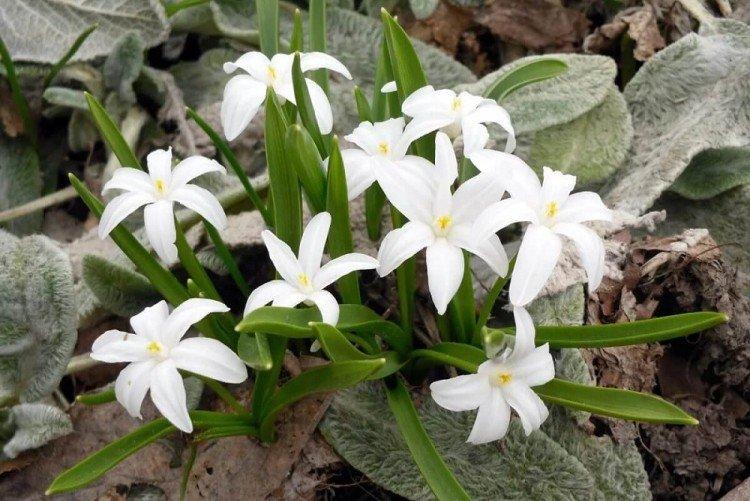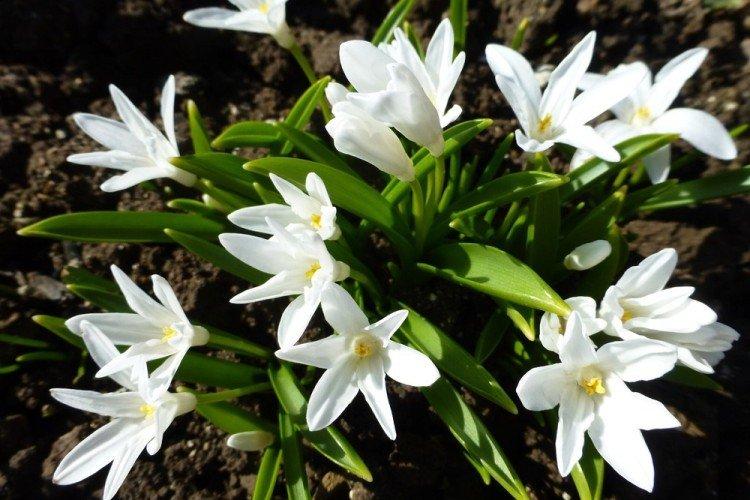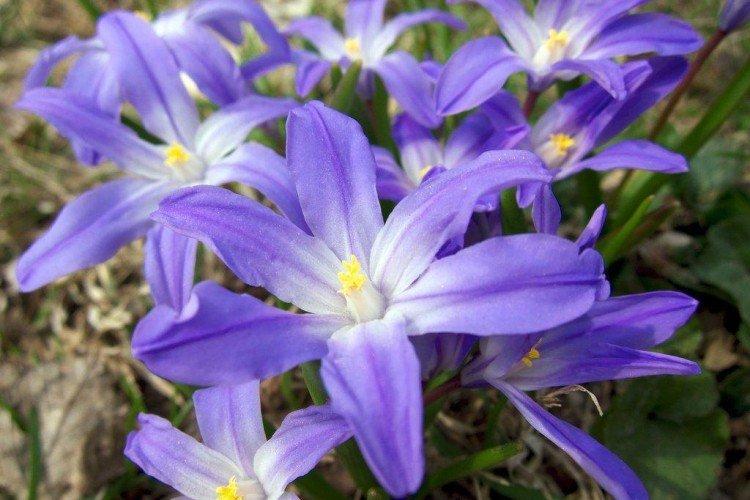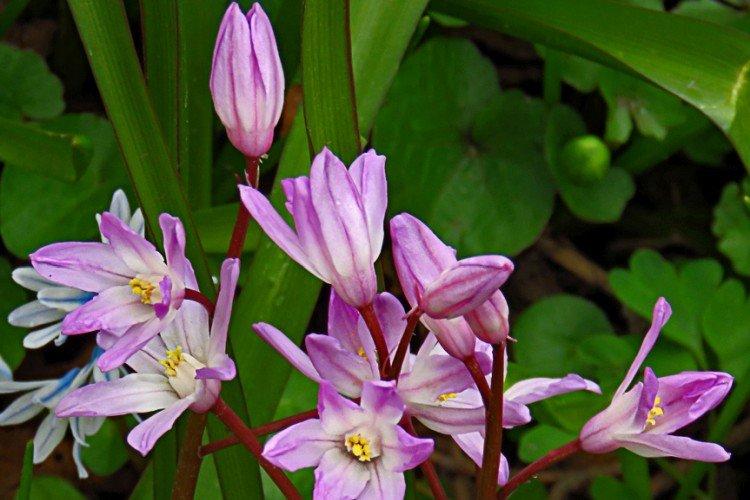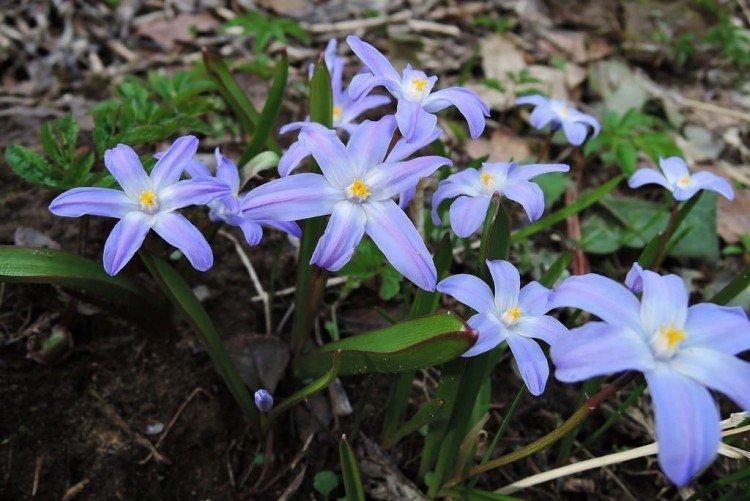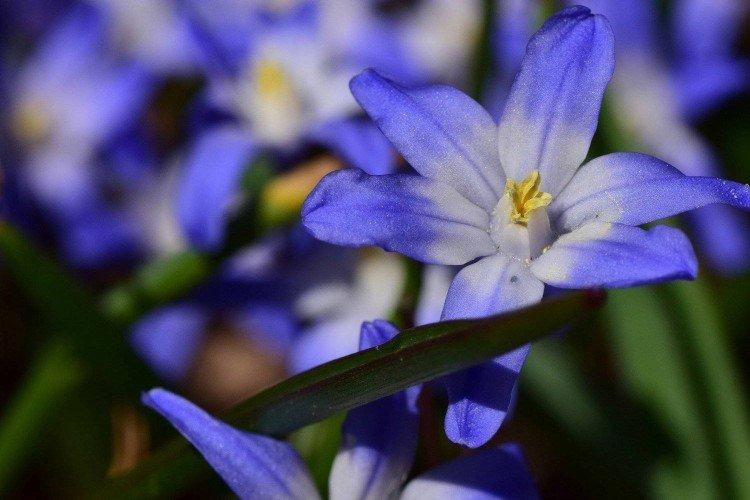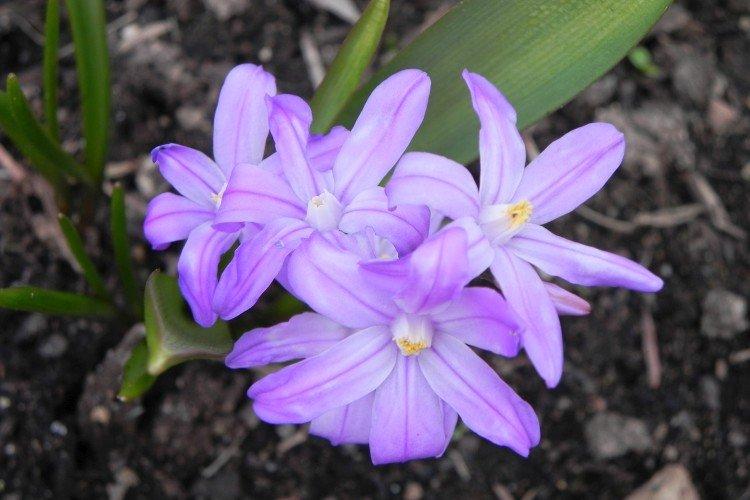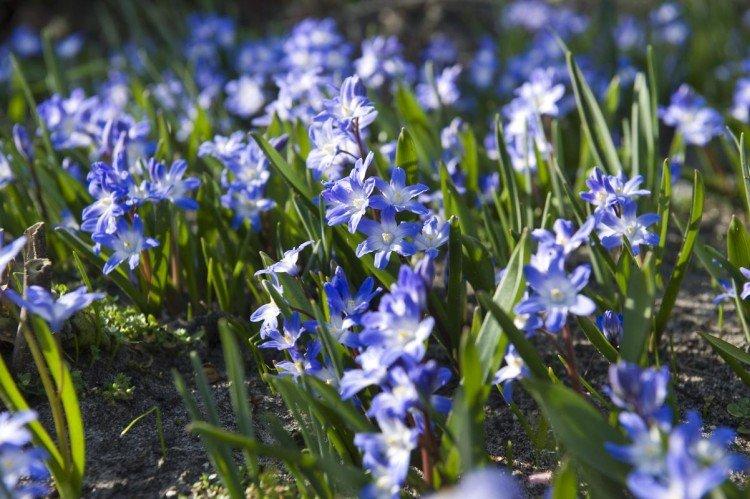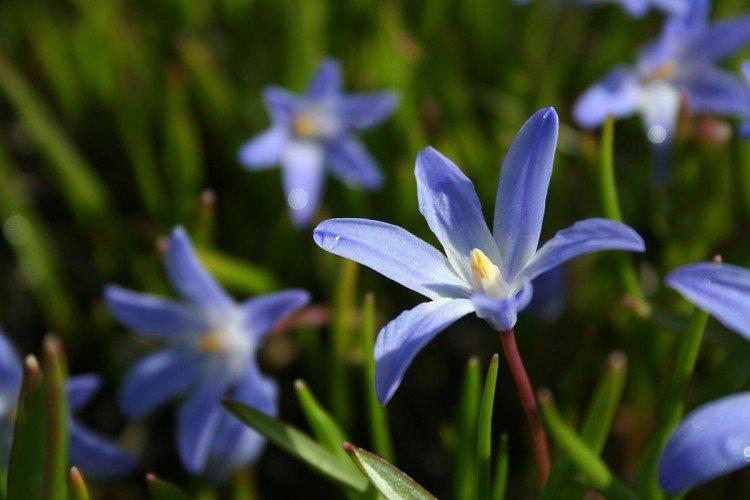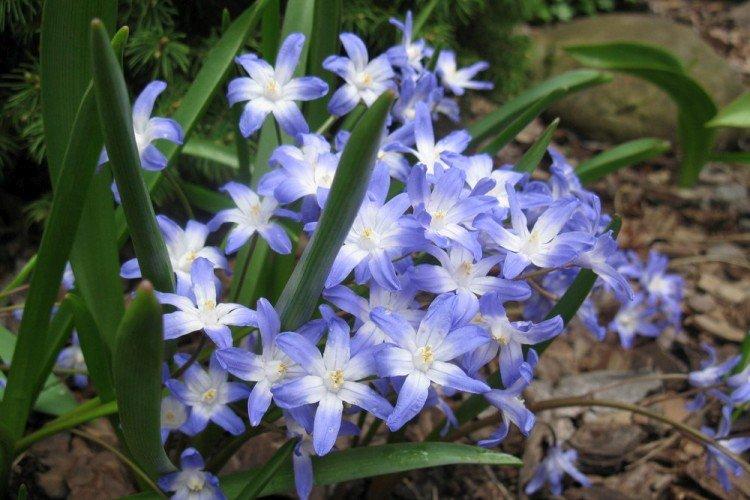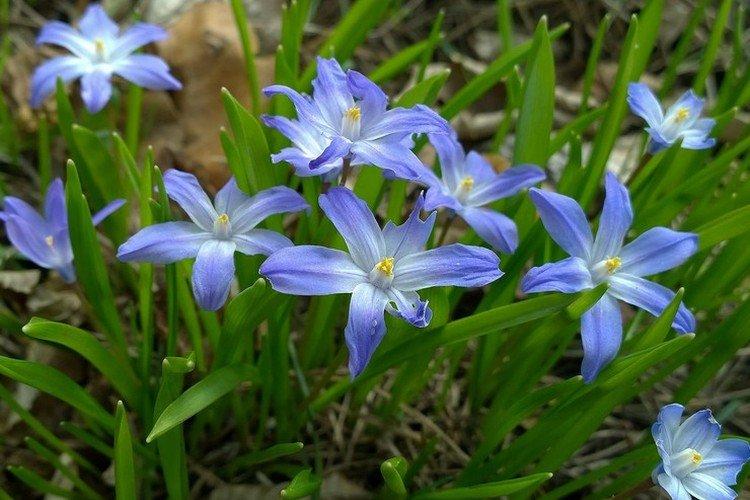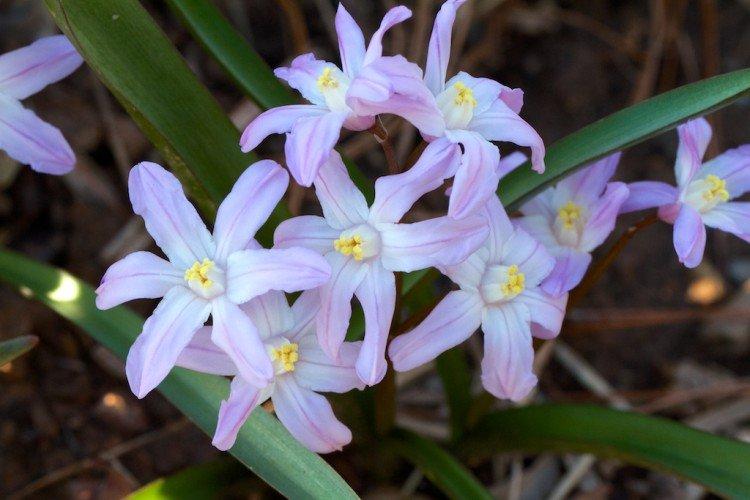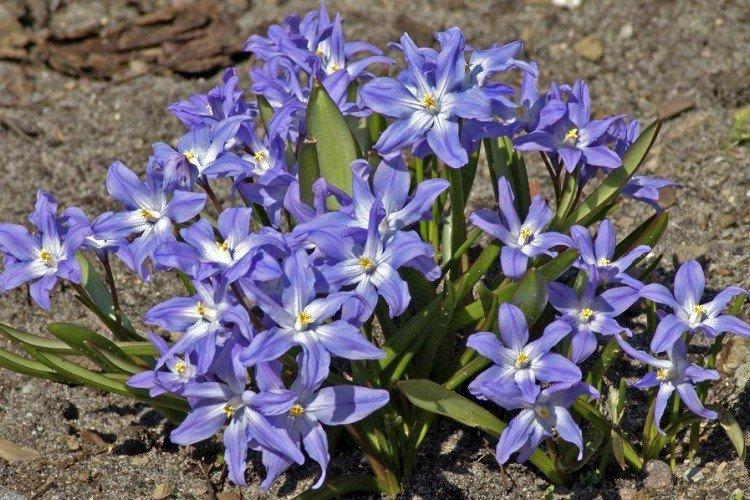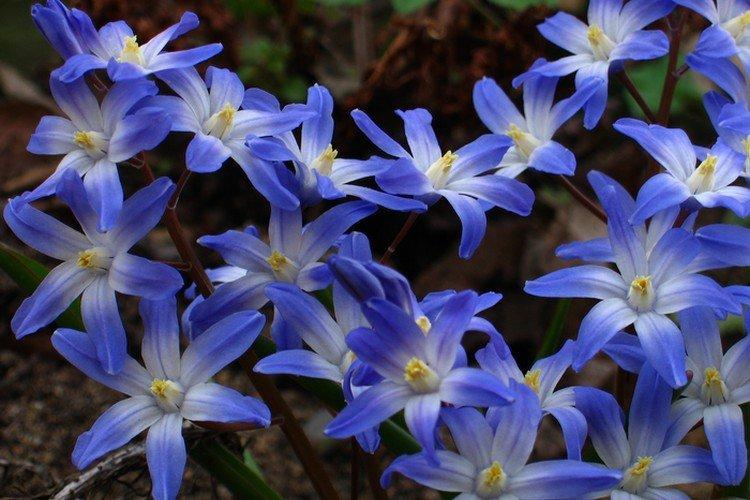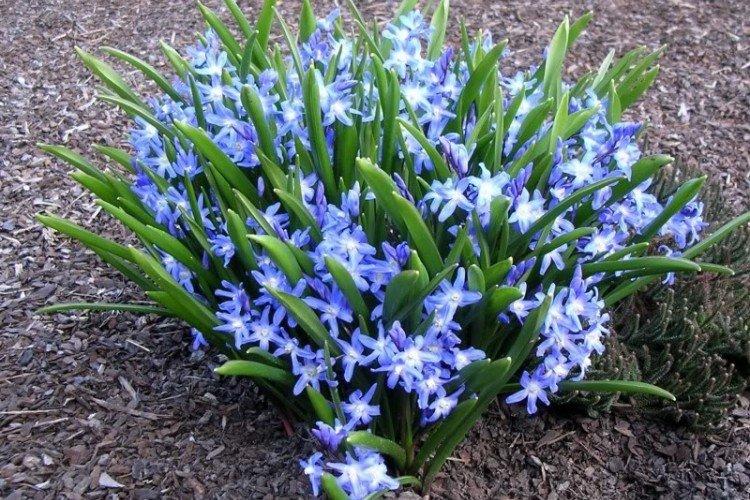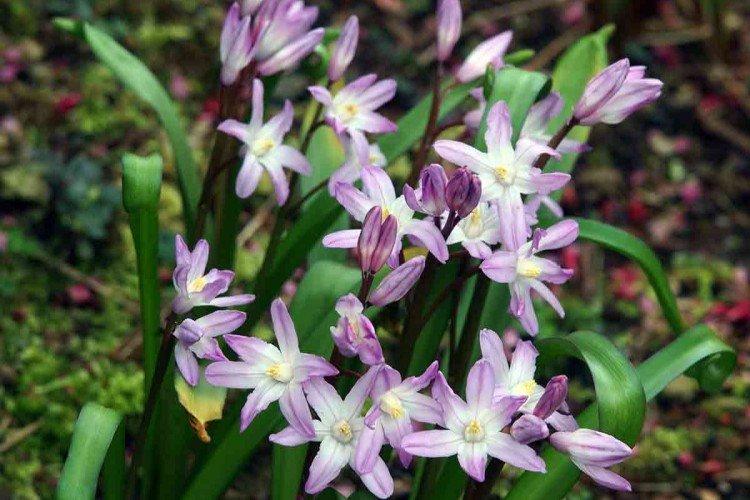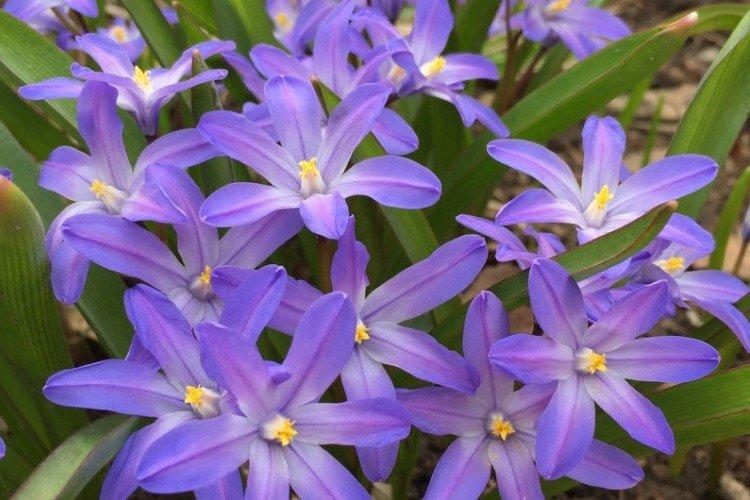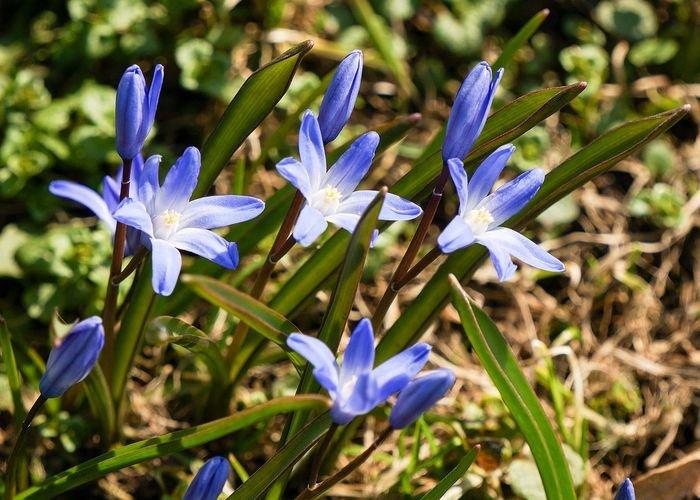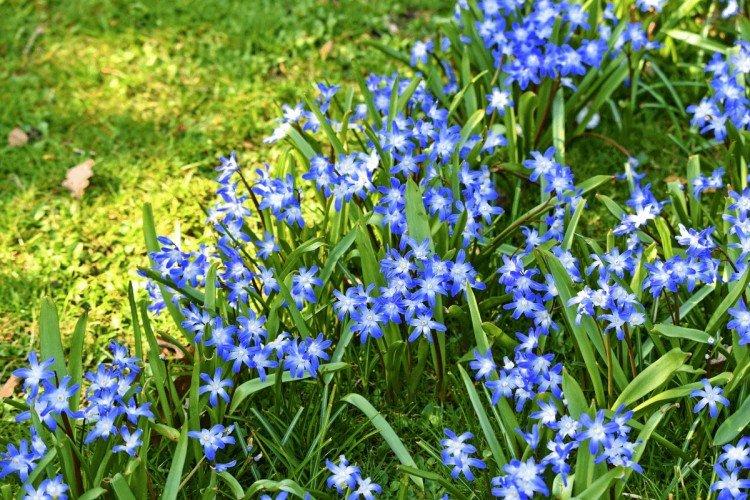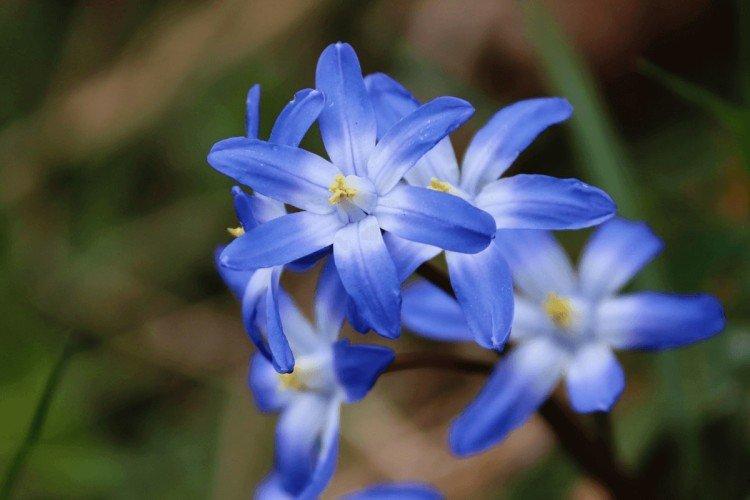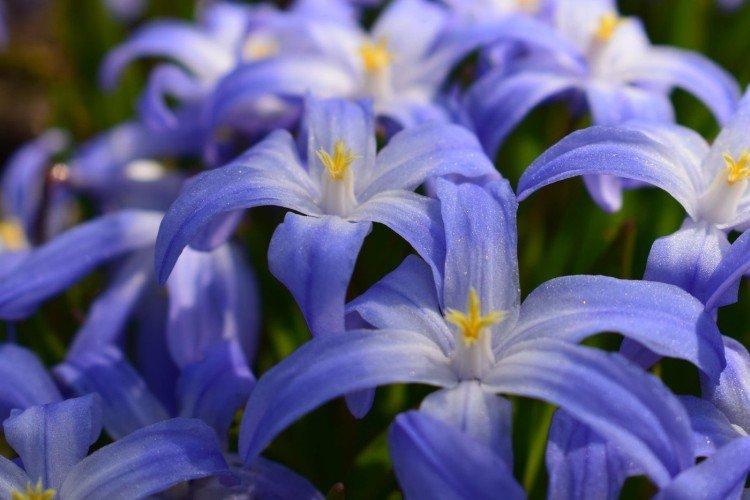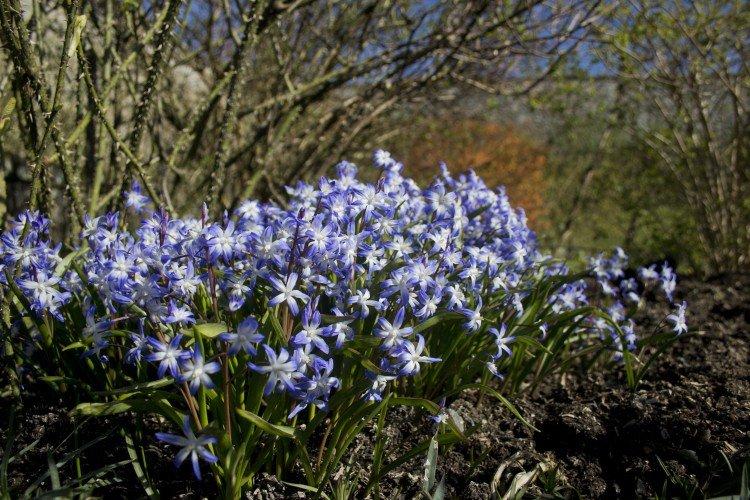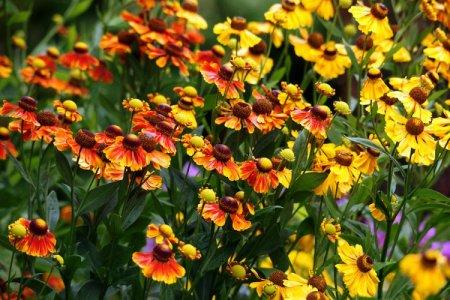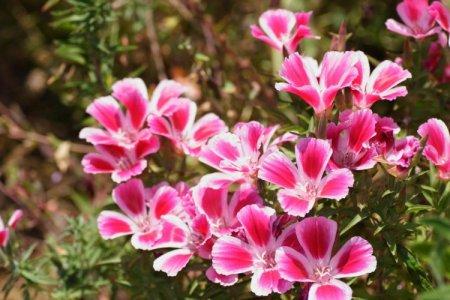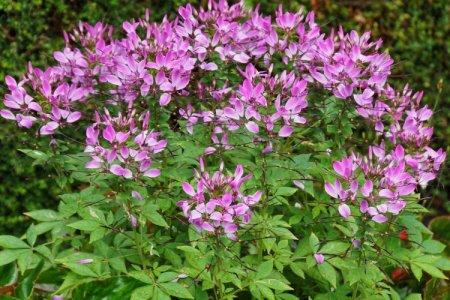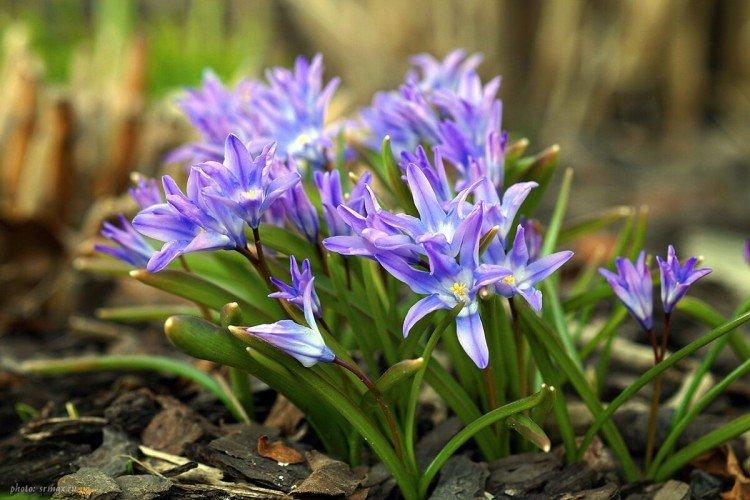
The most delicate chionodoxa is similar and at the same time not similar to all bulbous primroses. There is something in it from the woods, and something from the hyacinths. But at the same time, she does not lose her special zest, which is so dear to gardeners. Let's tell you more!
general information
The perennial lily chionodoxa is common in Crete and in certain regions of Asia. She blooms at the same time as snowdrops, for which she was nicknamed the Snow Queen.
Chionodox looks like a classic bulbous primrose. She has several long lanceolate leaves right at the root, and graceful star-shaped flowers of 6 petals are grouped in loose brushes. Chionodoxa bulbs are very small - up to 3 cm in length and almost half their width.

Chionodox species
Chionodox is a very small genus, which has only 6 varieties, and even less is used in ornamental gardening in the middle lane.
Chionodox Forbes
Small Turkish species up to 25 cm tall. It differs in denser racemose inflorescences up to 15 buds each. In addition, this species does not reproduce by seeds, but only by children.
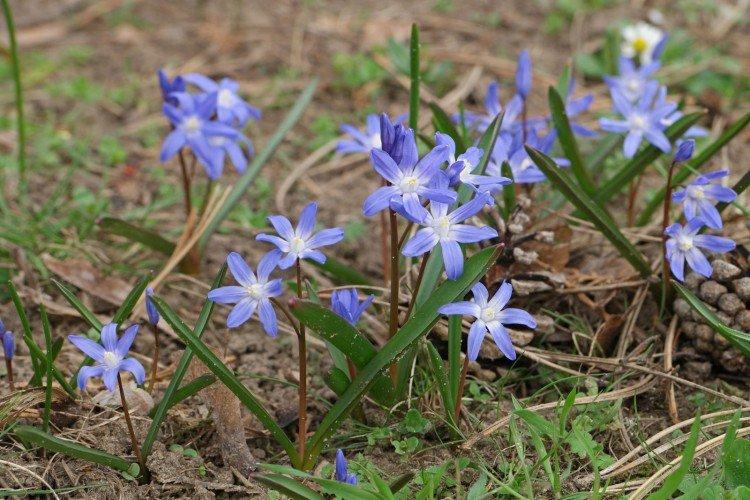
Sardinian Chionodox
With a height of only 10-12 cm, its peduncles are very powerful and strong. Each has about 10 bright blue buds up to 2 cm in diameter. There are very beautiful pink and snow-white varieties.
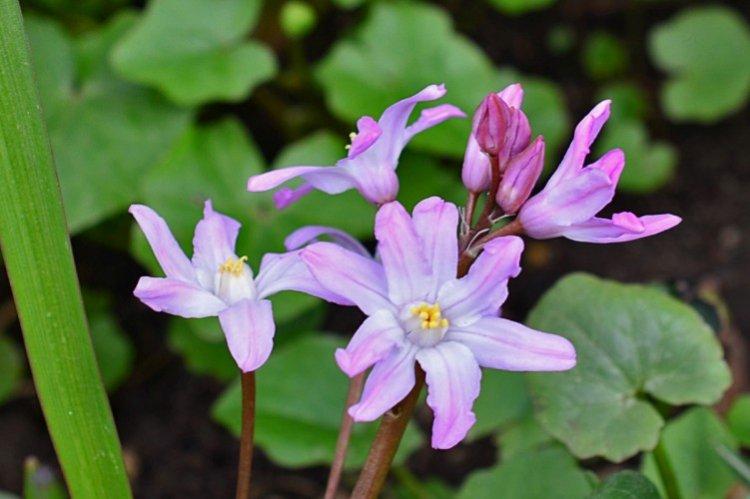
Chionodox Lucilia
She is gigantic, despite the height of only 20 cm. It is a mountain species with thin linear leaves and rather large flowers up to 3 cm in diameter.
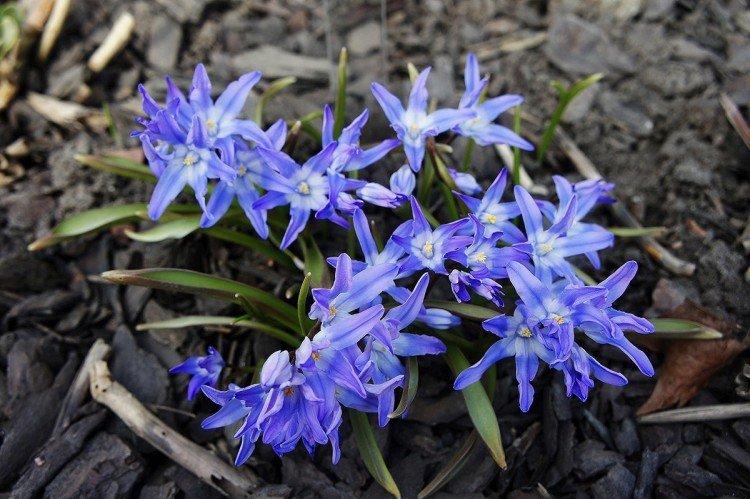
Chionodox care
Chionodox can be confidently called the most unpretentious among primroses. Therefore, we especially advise you to take a closer look at them for novice gardeners!
Temperature
Even the most thermophilic varieties are perfectly adapted to the Russian climatic conditions. Shelter for the winter will only be needed in the northern regions during a snowless winter in an open area.
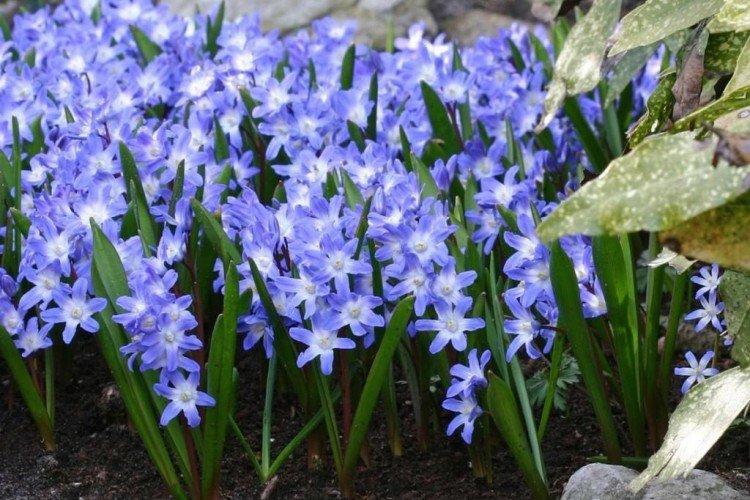
Lighting
Chionodoxes prefer a light area or light shade. The more sun and heat, the faster the snow will melt in winter, and the earlier the plant will bloom. But in the shade, flowering, although it begins later, lasts longer.
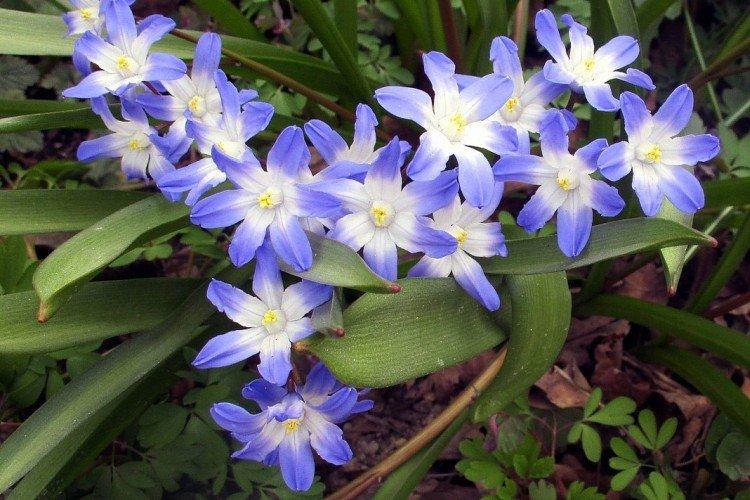
Watering
Usually, chionodox is quite enough melt water and natural moisture. But if the winter was snowless, and the spring was dry, then fields the flowerbed on their own. Then be sure to loosen the soil and get rid of the weeds. Use warm water and try not to splash on the buds.
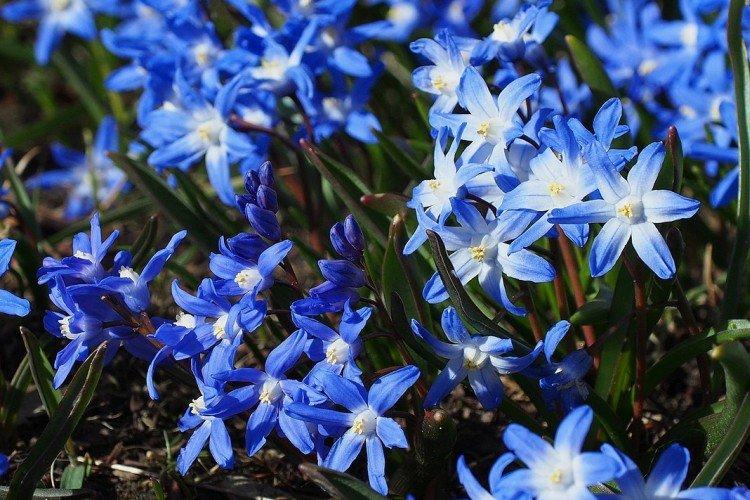
The soil
Chionodoxes prefer forest soil. Of course, in the garden this is a problem, but you can add a little foliage and bark to the soil. It is advisable to choose a nutrient soil with a neutral reaction and moderate moisture.
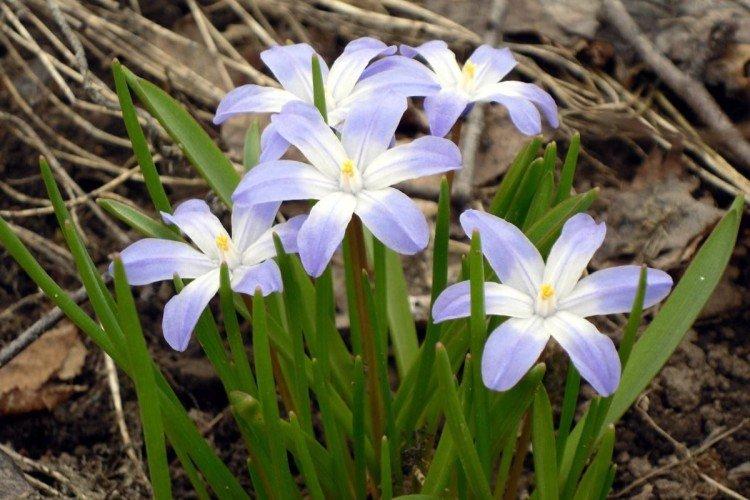
Fertilizers and feeding
At the beginning of spring, we recommend applying a complex top dressing to the soil. If you use granules, then you must loosen the soil so that the substances are better absorbed.
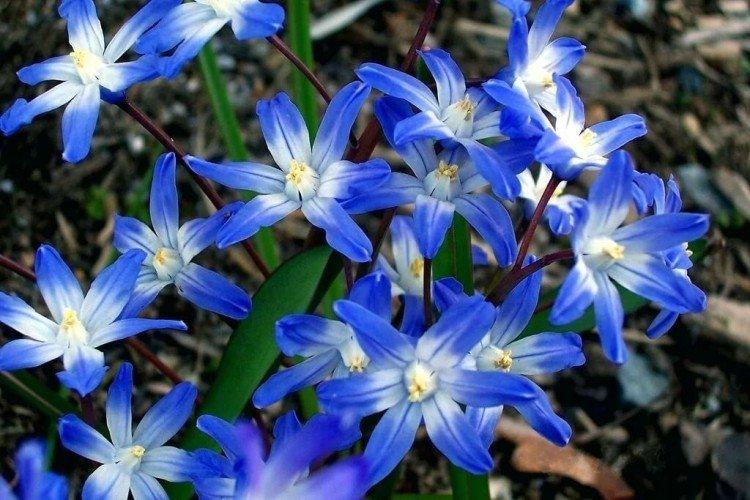
Pruning
After flowering, cut off the flower arrows, but leave the leaves. The bulb draws useful substances from them, and gradually they will die off by themselves.
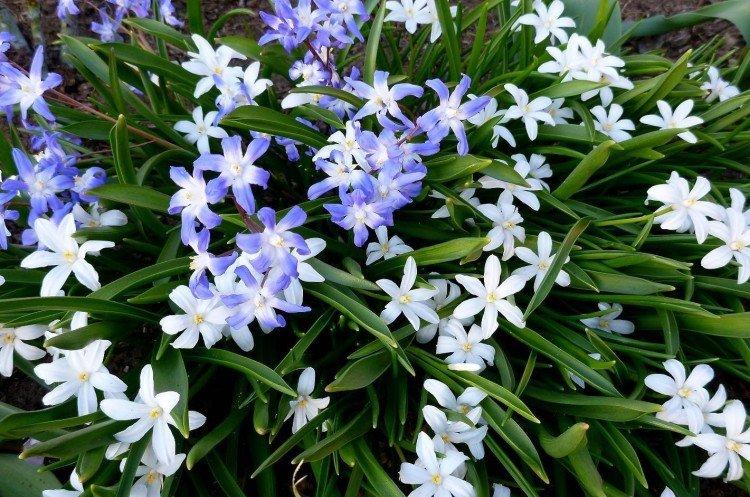
Self seeding
Keep in mind that chionodoxes reproduce intensively on their own. Therefore, if the overgrowth of the planting is not included in your plans, the situation will have to be carefully controlled. And in particular - to cut off the testes in advance.
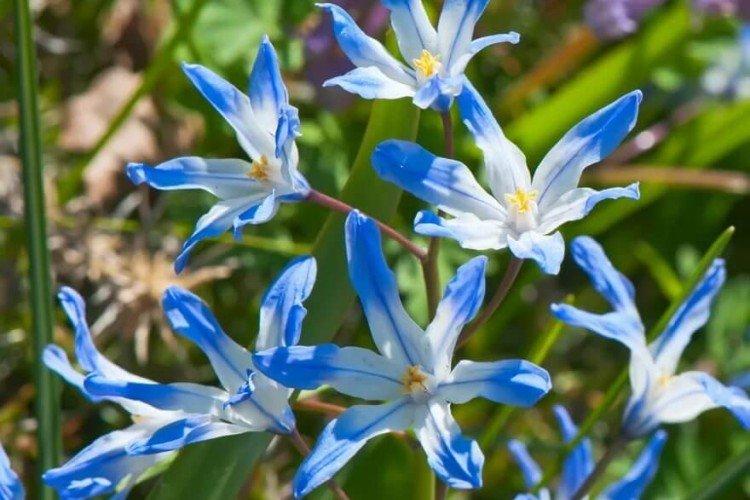
Storing the bulbs
After flowering, the bulbs are dug out at the end of July, when the ground part dries up. Store them in a dry and dark place at a temperature of 15-17 degrees, separate the children just before disembarking.

Planting and reproduction of chionodox
Chionodox bulbs are planted in open ground in early autumn, so that the roots have time to form before winter. They can be planted almost anywhere, and even close to trees and bushes. They will still bloom by the time a dense crown forms and blocks the light.
For reproduction, children are used from the same bulbs that just grow over the season. Moreover, due to their active development, it is recommended to transplant and rejuvenate flowers every few years, otherwise they will lose their decorative effect.
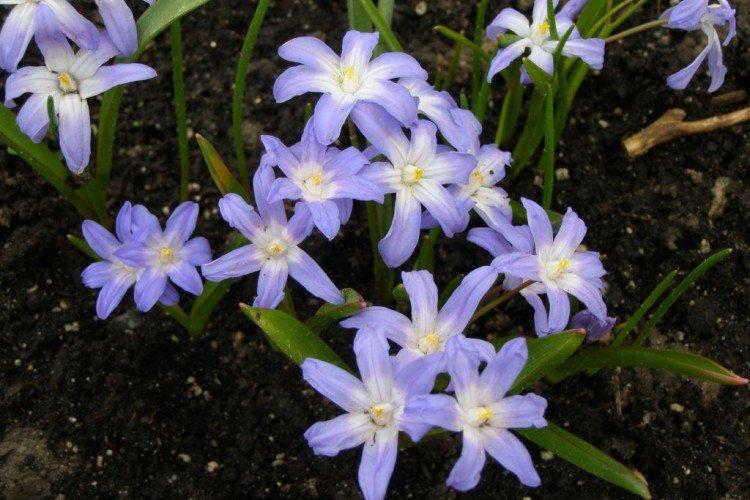
Pest and disease control
The most dangerous enemy of the chionodoxa is the bulb mite, whose larvae destroy the bulbs. It is difficult to get rid of them, but they can be prevented if the planting material is regularly examined and sorted out. Rodents and moles can also damage the bulbs. They use special scarers and baits.
Of the diseases, these are mainly various fungi due to high humidity and stagnant water. The problem is that putrefactive processes most often affect the bulb, and when the problem becomes noticeable, it is too late to save the flower. You need to get rid of it as soon as possible, and treat the neighboring flowers with fungicides.
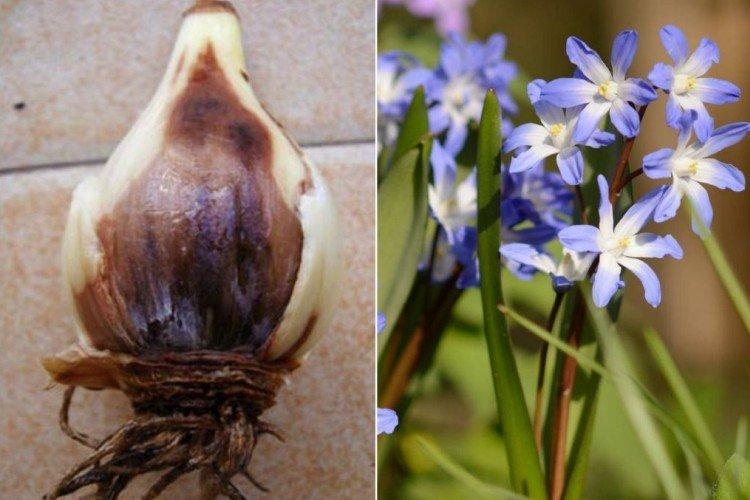
Chionodoxa - photo
Most often, blue chionodoxes are found in the areas. But pink, lilac and white varieties look just as good. And how adorable they are all together!
